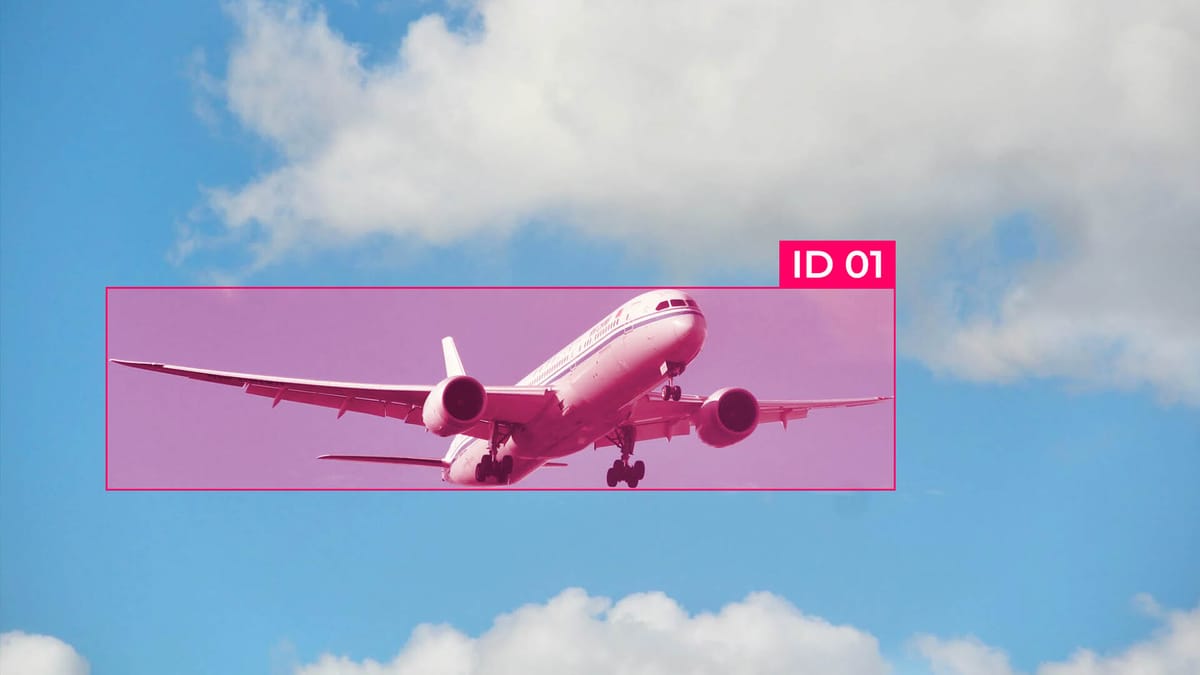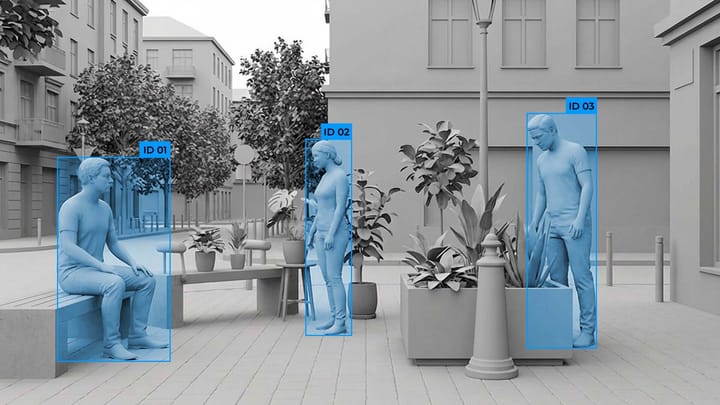Cloud-Based Annotation: AWS, Google Cloud, Azure

Modern machine learning systems require not only large amounts of data, but also accurate, structured annotations. To achieve this on an industrial scale, companies are transitioning to cloud annotation, a model where the annotation process occurs in the cloud. Utilizing cloud platforms such as AWS, Google Cloud, and Azure ML enables the construction of a scalable annotation infrastructure, distributing the workload across teams (distributed annotation), and facilitating reliable integration with other cloud services for training and deploying models.
Key Takeaways
- Scalability and integration with AI pipelines now dictate the selection of a platform.
- Enterprise-grade security features separate market leaders from niche tools.
- Pricing models vary significantly between providers – optimization is critical.
What Are These Collaborative Systems?
Collaborative systems in the context of cloud annotation are integrated environments that enable multiple annotators, reviewers, and data engineers to work together on large datasets across cloud platforms such as AWS, Google Cloud, and Azure ML. These systems synchronize data, roles, and progress in real time, allowing teams to perform distributed annotation without the hassle of version control or storage limitations.
In the case of AWS annotation, multiple annotators can work on the same dataset simultaneously through SageMaker Ground Truth. At the same time, reviewers can monitor the quality of the results from anywhere in the world. Google Cloud offers a similar system through Vertex AI Data Labeling, which supports sharing, automatic task assignment, and model-assisted labeling for large teams. Azure ML provides workspaces for teams where scalable annotation processes can be coordinated and results can be integrated directly into ML processes.
Fueling Intelligent Systems
High-quality data, robust intelligent systems, and cloud annotation are key components of the learning process. Through distributed annotation, large teams can quickly and accurately label datasets of various types, including text, images, video, and sensor streams. Scalable annotation enables the processing of millions of objects without compromising quality, ensuring that data for training models is always up-to-date and accurate. Cloud services provide centralized storage, access control, and automated quality assurance, thereby reducing human error and increasing efficiency.
Using cloud services in the annotation process enables the direct integration of annotations into the AI project lifecycle. Task management systems and progress monitoring increase transparency and ensure compliance with quality standards. A centralized environment simplifies the reuse and versioning of datasets, which is critical for complex models.
Comparing Cloud Annotation Platforms: AWS, Google Cloud, and Azure
AWS (Amazon SageMaker Ground Truth)
The AWS platform offers a reasonably flexible annotation system. GroundTruth can distribute tasks among workers, supports pre-automated annotation, annotation consolidation, and specialized UI templates (e.g., for key points), allowing for scaling the process and improving quality.
One of the advantages is deep integration with other AWS services, which enables the creation of secure and scalable data processing chains.
However, for large teams or specific roles, significant configuration may be required, and the cost and need for worker management should also be taken into account. It is also worth considering that although the service supports many automation features, the interface and documentation are sometimes criticized.
Google Cloud (Vertex AI Data Labeling)
Google Cloud's data labeling solution provides an interface for working with images, videos, and text, allowing users to import unlabeled data, apply labeling (such as classification and object detection), and then use it to train models in Vertex AI.
Additionally, Google Cloud supports integration with partner solutions (e.g., Labelbox) for a hybrid model that combines AI pre-labeling + human evaluation.
The advantages include ease of launch and tight integration with Google Cloud's analytics and data warehouse, which simplifies building a complete model lifecycle.
However, potential disadvantages include limited flexibility in UI or custom labeling templates compared to AWS, and dependence on the Google ecosystem (which can be both an advantage and a disadvantage).
Azure ML (Azure Machine Learning Data Labeling)
Microsoft Azure allows the creation of projects for image or text markup in the Azure ML Studio interface.
There are options for machine-assisted markup (ML-assisted), clustering of similar objects, pre-markup, and the ability to engage third-party markup providers through the Azure Marketplace.
However, it is essential to note that the markup service in Azure ML is currently in a pre-configuration state and is planned for deprecation: the service will be decommissioned on September 30, 2026.
Integration with Storage Solutions
On AWS, GroundTruth utilizes Amazon S3 to store input data, including images, videos, and text files. The annotation results are also stored in S3, with the ability to encrypt and run within a private network, ensuring security and centralized data management. This architecture allows for an automated "data → annotation → storage → model training" chain, increasing the efficiency of large projects.
On Google Cloud, data annotation is performed through Google Cloud Storage (GCS), where both raw and processed data are stored. The platform supports integration with annotation partners, and the results can be directly fed into analytics services and BigQuery. This enables the fast processing of large datasets and supports scalable annotation approaches across distributed teams.
In the case of Azure ML, annotation projects are tied to Azure Blob Storage, where annotation data and process results are stored. Although the service supports machine-aided annotation and feature clustering, it is scheduled for deprecation in 2026, necessitating data migration planning. At the same time, centralized storage in Blob Storage allows for access control and reuse of datasets in distributed annotation scenarios.
Key Features and Benefits of Paid Annotation Tools
- High-quality annotation. Paid tools offer access to proven annotation platforms equipped with built-in quality control mechanisms, which reduce errors and enhance data accuracy.
- Support for various data types. Such services allow working with images, video, text, audio, and sensor streams, providing versatility within a single tool.
- Process automation. Tools often offer machine-aided markup, data pre-filling, and consolidation of multiple annotation results, which significantly speeds up teamwork.
- Scalability. Paid solutions make it easy to scale annotation processes, connect large teams, and organize distributed annotation for large datasets without losing efficiency.
- Integration with cloud platforms. They integrate tightly with cloud services, including AWS annotation, Google Cloud, and Azure ML, which simplifies storage, data management, and further model training.
- Security and access control. Paid services offer data encryption, multi-level access control, and centralized management, which is critical for commercial projects and sensitive information.
- Teamwork support. Tools enable the coordination of tasks among annotators, reviewers, and managers, ensuring process transparency and efficient workflow management.
- Analytics and reporting. Most paid platforms provide detailed metrics on project performance, accuracy, and progress, which helps optimize processes and improve data quality in the future.
Highlights of Popular Paid Annotation Tools
- Keylabs. The platform is positioned as a modern cloud annotation platform, supporting 3D data, video, images, and multi-level segmentation. It offers machine-aided annotation, object tracking in video, multi-level team coordination, and performance analytics. Keylabs is well-suited for complex projects that require scalable and distributed annotation, as well as integration with cloud storage for centralized data management.
- Supervisely. The platform specializes in computer vision and image and video markup, supports 3D annotation, keypoints, and object segmentation. Supervisely enables the organization of distributed annotation, integrates with cloud storage, and provides analytical tools to assess team performance.
- Appen. The tool is designed for large annotation teams, providing support for text, image, and audio data, as well as quality control at all stages of annotation. Appen integrates with cloud platforms, enabling the scaling of processes and flexible organization of cloud annotation for global projects.
Ensuring Quality Control and Security in Annotation
First, server-side encryption ensures that all uploaded files - images, videos, text, or 3D data - are stored in encrypted form in cloud storage. For additional security, encryption key management via KMS (Key Management Service) systems is often employed, which enables centralized control of access to keys and tracking of their usage.
Second, user rights control is implemented through a multi-level role system: annotators, reviewers, managers, and administrators have different access rights to data and platform tools. This allows for precise control over who can edit the markup, review it, or download results, thereby reducing the risk of accidental or malicious changes.
Third, distributed annotation involves distributing tasks among different annotators and geographically dispersed teams. Technically, this is implemented through task queues, version control, and the synchronization of results via a cloud backend, which ensures that multiple users can work on the same dataset simultaneously without conflicts.
Fourth, analytics and control mechanisms utilize algorithms to assess the accuracy of the markup, comparing the results of multiple annotations, applying statistical consistency metrics, identifying anomalies, and automatically flagging errors. This enables the rapid detection of inaccuracies and facilitates real-time workflow corrections.
Summary
Cloud platforms add the technical infrastructure to automate routine tasks, such as loading and sorting data, pre-mapping by machine, and consolidating the results of multiple annotations. Centralized data storage in the cloud offers secure access, encryption, and file versioning, enabling teams to collaborate on the same datasets without the risk of information loss or version conflicts.
This makes cloud annotation an effective solution for preparing large and complex datasets required to train modern AI models, with the ability to scale processes to meet the growing needs of projects.
FAQ
What is cloud annotation, and why is it important?
Cloud annotation is the process of labeling data in a cloud environment, enabling teams to work efficiently on large datasets. It ensures scalable annotation and supports integration with cloud platforms for AI training.
Which cloud platforms are commonly used for annotation?
AWS, Google Cloud, and Azure ML are the leading cloud platforms for data annotation. Each provides cloud services for distributed annotation and supports various data types.
What is distributed annotation?
Distributed annotation allows multiple annotators to work on the same dataset simultaneously. This improves efficiency, supports scalable annotation, and ensures consistency across large projects.
How does AWS annotation handle large-scale data?
AWS SageMaker Ground Truth offers automated labeling, multi-annotator consolidation, and integration with S3. This enables secure and scalable annotation pipelines for complex AI datasets.
What features does Google Cloud Vertex AI Data Labeling provide?
It supports labeling of images, video, and text, integrates with BigQuery, and enables distributed annotation. The platform also allows machine-assisted labeling for higher efficiency.
How is quality control ensured in cloud annotation?
Platforms use multi-layer review, annotation consolidation, and automated accuracy checks. Combined with analytics, this ensures high-quality results for scalable annotation.
How do cloud platforms secure annotated data?
They use server-side encryption, role-based access control, and secure storage integration. This protects sensitive information while supporting distributed annotation workflows.
Why is integration with storage solutions critical?
Integration with cloud storage services like S3, GCS, or Azure Blob enables secure, centralized storage and seamless workflows from annotation to ML training. This is essential for managing scalable annotation and cloud services.



Comments ()